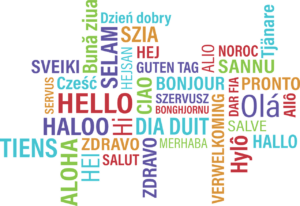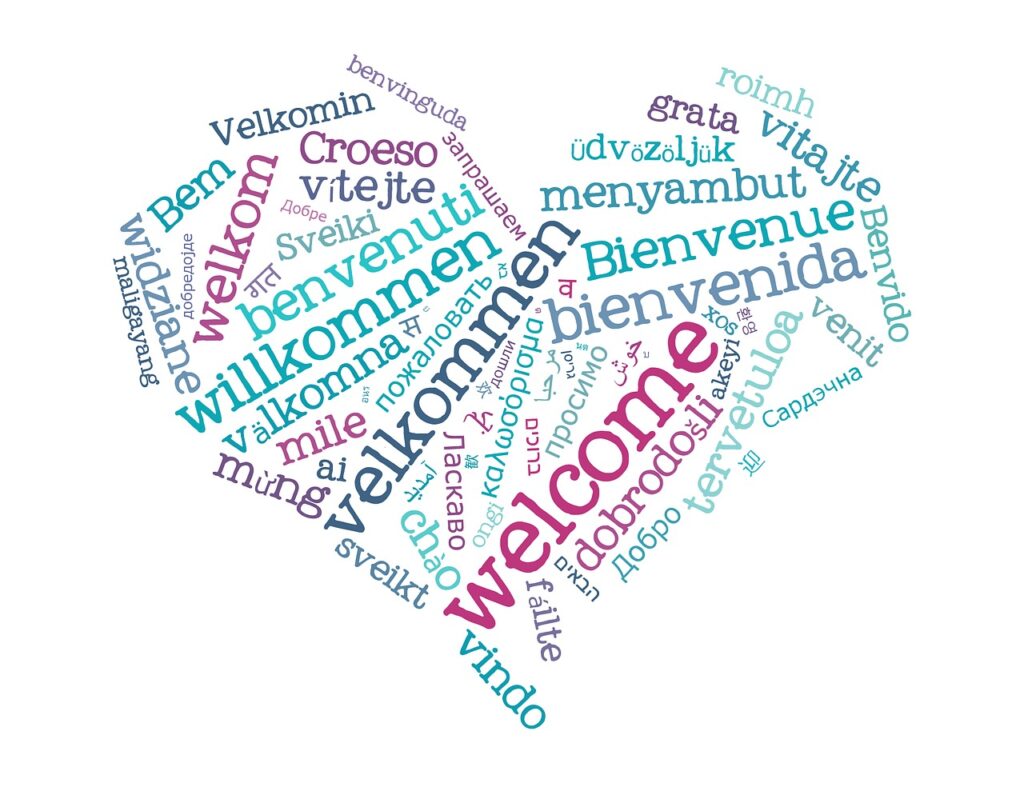Learning Objectives
- getting to know practices that include pupils’ languages in the classroom
Resources needed
- internet connection
Warning!
You can try out all activities and excercises, but you can't save any data. Please login or create a free account to save your data.
Exercise 1: Multilingual classroom
Every class is different, just like every child is different. Pupils bring their own linguistic repertoires to the school. They might speak a dialect or their home language(s) which might be different from the language of instruction at school. All of this contributes to who pupils are and what makes each of them unique. Watch this video and see how this teacher integrates his students’ languages into the classroom.

What are the aims and the benefits of the language passport? And what other benefits can you think of?
One of the aims of the language passport is to raise the pupils’ awareness of their own linguistic repertoires and to encourage them to make use of them. They identify links between the places and the people they use the languages with. Using the pupils’ home languages improves interaction in the classroom, and it is beneficial to their emotional well-being. The exercise gives room for self-reflection and for self-identification, and it fosters a positive attitude to their own but also to other people’s multilingualism. This is especially important in places where hierarchical language attitudes prevail, e.g., in majority language versus home language(s) situations. Through this exercise, all languages are equally validated.
Do you know any other activities, similar to this one?
Similar activities can be teaching and exchanging greetings in different languages (pupils’ home languages for example) or labelling class room items in different languages.
Exercise 2: Managing linguistic diversity in the classroom
What does linguistic diversity mean? People have different linguistic backgrounds: one might have more than one native language or speak a dialect or a language that is not spoken on the territory they live on. A person’s language(s) might not be covered or protected by the listed conventions and treaties you read about in activity 2. For example, the definition of the European Charter for Regional or Minority Languages neither covers dialects nor migrant languages. Nonetheless, both are very much part of the (diverse) linguistic reality across the globe.
Please read the following scenario:

How would you integrate Alex into your lessons (including in non-language subjects)? Describe your strategies to accommodate Alex’ (linguistic) needs for the first 8 weeks he is in your classroom. You can draw from your own professional experience and the insights you gained in the activities you have completed so far.
Elements of a correct answer are:
The first activity I would carry out with the class is introducing the language passport. This way I want to stimulate the interaction between the old pupils and our new pupil Alex. Not only is it a possibility for the pupils to self-reflect but I will also show Alex that his languages are welcomed and valued in our classroom. Additionally, the other students are very likely to discover similarities between each other. By allowing Alex to use his home languages (e.g., write in his school diary in those languages) and by placing him in the same home language working groups, I will encourage him to use Romanian, Italian or English when he is not yet sure how to express it in French. I could also help him by using instruction words (scaffolding help) in other languages that I know (my own linguistic repertoire), depending on his preference. With the use of translation tools, the entire class can benefit from learning key instructional verbs in other languages.
Exercise 3: Promoting pupils’ languages
In the video from exercise 1, you saw an example activity that integrates pupils’ languages in the classroom. In exercise 2, you were asked to develop a strategy to include a new pupil into your classroom who only started to learn the language of instruction. Maybe you found it easy to design a plan to include them. Or maybe you found it more difficult. If you would like to engage with your pupils’ languages in your classroom activities, there are different approaches that can help to facilitate their linguistic repertoires. One multilingual approach is ‘translanguaging’. Listen to this episode of the Kletsheads Podcast, “How to make use of bilingual children’s home languages in the classroom: Translanguaging [Season 1, Episode 9]” (01:38-10:42) (Unsworth, 2021) to find out more about this approach.

After you have listened to the sequence of the podcast, please answer the following questions:
What are some of the goals of the translanguaging approach mentioned in the podcast sequence?
The overarching goal is to improve learning. Children who are just learning the schooling language can benefit from a translanguaging approach, which will help them to acquire said language. The translanguaging approach recognises pupils’ languages as a resource to learning new contents. It also aims at raising the pupils’ involvement, increase motivation, contribute to pupils’ well-being, and creating an atmosphere where all languages are valued.
Could you see yourself applying translanguaging in your classroom? If yes, describe how you would integrate it into your lesson. If no, what kinds of obstacles do you see to this approach in your teaching?
There are various ways translanguaging can be used in a multilingual class. Teachers as well as students can swap between different languages depending on combinations of languages in the class and depending on the situation. Where needed, students can have access to translating tools. Translanguaging is not unique to teaching language but can also be helpful in subject classes, e.g., in mathematics class where learners are helped by the teacher’s use of scaffolding words in order to make instructions easier. In other words, the teacher introduces new words for the same mathematical concepts or instructional language so the pupils feel they belong to school community and therefore better engage in learning. From early on, students can develop intercultural awareness and open-minded attitudes towards other language speakers.
How could you address possible obstacles to this approach?
One obstacle can be that learners do not want to engage in a language other than the language of instruction. This can have different reasons and it is important to accept the their choice of how they want to learn. If you feel like your students are hesitant to make use of their language resources because they do not feel safe to do so, it might be helpful to first address this issue and make sure that students feel comfortable and connected in the classroom.
